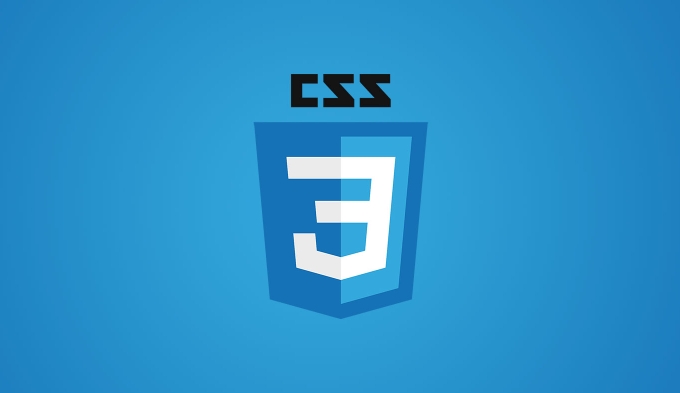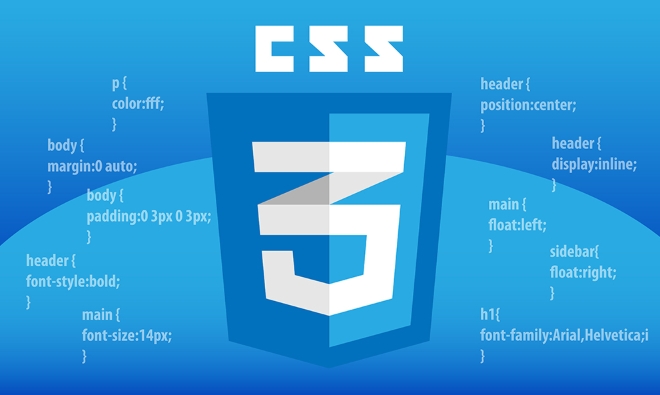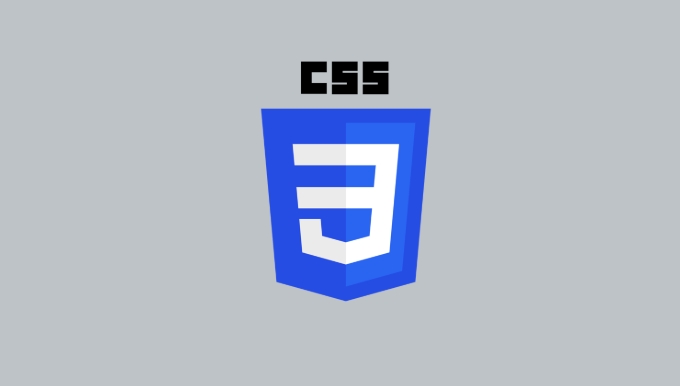Automatic prefixes using Autoprefixer are the most recommended practices at present. It can automatically add necessary prefixes according to the target browser configuration, reduce redundant code and support mainstream construction tools; 2. Manual prefixes are suitable for debugging or experimental development. Common prefixes include -webkit-, -moz-, -ms-, -o-, but repeated codes are expensive to maintain, and are not recommended for long-term use; 3. Common attributes that require prefix include Flexbox/Grid layout, animation transition, gradient background, filter transformation, user selection control, etc., which can be processed through Can I Use to query compatibility or directly depend on tools.

When writing CSS, vendor prefixes (vendor prefixes) is an unavoidable problem. They are meant to allow browser manufacturers to provide support for new features before the standards are finalized. If you want the website to display the effect normally in various browsers, it is necessary to handle vendor prefixes well.

Here are some practical methods and suggestions to help you better deal with this problem.
1. Automatically add prefixes using Autoprefixer
This is the most recommended practice at present. Autoprefixer can automatically add appropriate vendor prefixes to CSS properties according to your target browser configuration.

- It uses Can I Use data to determine which attributes need to be prefixed
- No unnecessary prefixes are added, reducing code volume
- Support mainstream construction tools such as PostCSS, Webpack, Gulp, etc.
For example, you wrote:
.example {
display: grid;
}Autoprefixer will automatically convert to code like this based on your target browser:

.example {
display: -ms-grid;
display: grid;
} Just configure browserslist (for example, specify the target browser scope in package.json ), and leave the rest to the tool.
2. Manual prefix is only applicable to special cases
Although tools are recommended in most cases nowadays, sometimes you may need to manually add vendor prefixes, such as debugging compatibility issues or doing experimental development.
Common vendor prefixes are:
-
-webkit-(Chrome, Safari) -
-moz-(Firefox) -
-ms-(Old version of IE/Edge) -
-o-(Old version of Opera)
For example, write a button with transition:
.button {
-webkit-transition: background-color 0.3s ease;
-moz-transition: background-color 0.3s ease;
-ms-transition: background-color 0.3s ease;
-o-transition: background-color 0.3s ease;
transition: background-color 0.3s ease;
}However, this writing method is repeated many times and has high maintenance costs, so it is not recommended to use it for a long time.
3. Pay attention to which attributes need to be prefixed
Not all CSS properties require vendor prefixes. Generally speaking, the following types of attributes are more common:
- Flexbox and Grid layouts (early versions)
- Animation and transition (animation, transition)
- Gradient background (linear-gradient)
- Filter and transform (filter, transform)
- User-select control
If you are not sure whether a certain attribute needs to be prefixed, you can check the compatibility situation in Can I Use , or directly use tools to help you solve it.
Basically that's it. Autoprefixer solves almost most problems. As long as it is configured properly, you no longer have to worry about the specific writing of vendor prefixes. Manual addition is sometimes useful, but only a temporary method. Only by making good use of tools can you focus on more important style designs.
The above is the detailed content of How to handle vendor prefixes in CSS?. For more information, please follow other related articles on the PHP Chinese website!

Hot AI Tools

Undress AI Tool
Undress images for free

Undresser.AI Undress
AI-powered app for creating realistic nude photos

AI Clothes Remover
Online AI tool for removing clothes from photos.

Clothoff.io
AI clothes remover

Video Face Swap
Swap faces in any video effortlessly with our completely free AI face swap tool!

Hot Article

Hot Tools

Notepad++7.3.1
Easy-to-use and free code editor

SublimeText3 Chinese version
Chinese version, very easy to use

Zend Studio 13.0.1
Powerful PHP integrated development environment

Dreamweaver CS6
Visual web development tools

SublimeText3 Mac version
God-level code editing software (SublimeText3)
 How to change text color in CSS?
Jul 27, 2025 am 04:25 AM
How to change text color in CSS?
Jul 27, 2025 am 04:25 AM
To change the text color in CSS, you need to use the color attribute; 1. Use the color attribute to set the text foreground color, supporting color names (such as red), hexadecimal codes (such as #ff0000), RGB values (such as rgb(255,0,0)), HSL values (such as hsl(0,100%,50%)), and RGBA or HSLA with transparency (such as rgba(255,0,0,0.5)); 2. You can apply colors to any element containing text, such as h1 to h6 titles, paragraph p, link a (note the color settings of different states of a:link, a:visited, a:hover, a:active), buttons, div, span, etc.; 3. Most
 How to purge unused CSS?
Jul 27, 2025 am 02:47 AM
How to purge unused CSS?
Jul 27, 2025 am 02:47 AM
UseautomatedtoolslikePurgeCSSorUnCSStoscanandremoveunusedCSS;2.IntegratepurgingintoyourbuildprocessviaWebpack,Vite,orTailwind’scontentconfiguration;3.AuditCSSusagewithChromeDevToolsCoveragetabbeforepurgingtoavoidremovingneededstyles;4.Safelistdynamic
 What is a stacking context?
Jul 27, 2025 am 03:55 AM
What is a stacking context?
Jul 27, 2025 am 03:55 AM
Astackingcontextisaself-containedlayerinCSSthatcontrolsthez-orderofoverlappingelements,wherenestedcontextsrestrictz-indexinteractions;itiscreatedbypropertieslikez-indexonpositionedelements,opacity
 How to use the CSS backdrop-filter property?
Aug 02, 2025 pm 12:11 PM
How to use the CSS backdrop-filter property?
Aug 02, 2025 pm 12:11 PM
Backdrop-filter is used to apply visual effects to the content behind the elements. 1. Use backdrop-filter:blur(10px) and other syntax to achieve the frosted glass effect; 2. Supports multiple filter functions such as blur, brightness, contrast, etc. and can be superimposed; 3. It is often used in glass card design, and it is necessary to ensure that the elements overlap with the background; 4. Modern browsers have good support, and @supports can be used to provide downgrade solutions; 5. Avoid excessive blur values and frequent redrawing to optimize performance. This attribute only takes effect when there is content behind the elements.
 Describe different CSS units and when to use them
Jul 27, 2025 am 04:24 AM
Describe different CSS units and when to use them
Jul 27, 2025 am 04:24 AM
In web development, the choice of CSS units depends on design requirements and responsive performance. 1. Pixels (px) are used to fix sizes such as borders and icons, but are not conducive to responsive design; 2. Percentage (%) is adjusted according to the parent container, suitable for streaming layout but attention to context dependence; 3.em is based on the current font size, rem is based on the root element font, suitable for elastic fonts and unified theme control; 4. Viewport units (vw/vh/vmin/vmax) are adjusted according to the screen size, suitable for full-screen elements and dynamic UI; 5. Auto, inherit, initial and other values are used to automatically calculate, inherit or reset styles, which helps to flexibly layout and style management. The rational use of these units can improve page flexibility and responsiveness.
 How to style links in CSS?
Jul 29, 2025 am 04:25 AM
How to style links in CSS?
Jul 29, 2025 am 04:25 AM
The style of the link should distinguish different states through pseudo-classes. 1. Use a:link to set the unreached link style, 2. a:visited to set the accessed link, 3. a:hover to set the hover effect, 4. a:active to set the click-time style, 5. a:focus ensures keyboard accessibility, always follow the LVHA order to avoid style conflicts. You can improve usability and accessibility by adding padding, cursor:pointer and retaining or customizing focus outlines. You can also use border-bottom or animation underscore to ensure that the link has a good user experience and accessibility in all states.
 What are user agent stylesheets?
Jul 31, 2025 am 10:35 AM
What are user agent stylesheets?
Jul 31, 2025 am 10:35 AM
User agent stylesheets are the default CSS styles that browsers automatically apply to ensure that HTML elements that have not added custom styles are still basic readable. They affect the initial appearance of the page, but there are differences between browsers, which may lead to inconsistent display. Developers often solve this problem by resetting or standardizing styles. Use the Developer Tools' Compute or Style panel to view the default styles. Common coverage operations include clearing inner and outer margins, modifying link underscores, adjusting title sizes and unifying button styles. Understanding user agent styles can help improve cross-browser consistency and enable precise layout control.
 How to center text in CSS?
Jul 27, 2025 am 03:16 AM
How to center text in CSS?
Jul 27, 2025 am 03:16 AM
Use text-align:center to achieve horizontal centering of text; 2. Use Flexbox's align-items:center and justify-content:center to achieve vertical and horizontal centering; 3. Single-line text can be vertically centered by setting line-height equal to the container height; 4. Absolute positioning elements can be combined with top: 50%, left: 50% and transform:translate (-50%, -50%) to achieve centering; 5. CSSGrid's place-items:center can also achieve dual-axis centering at the same time. It is recommended to use Flexbox or Grid first in modern layouts.






